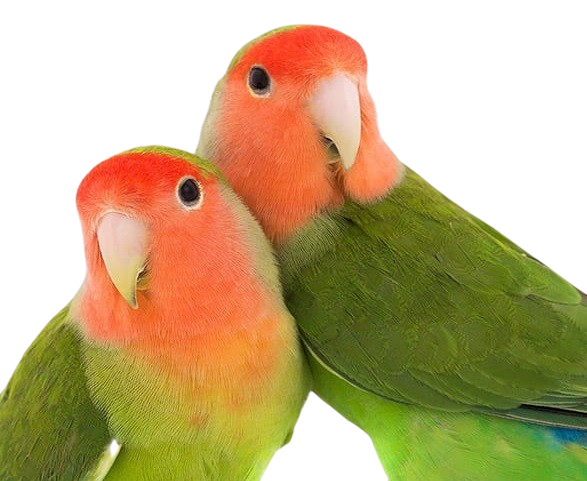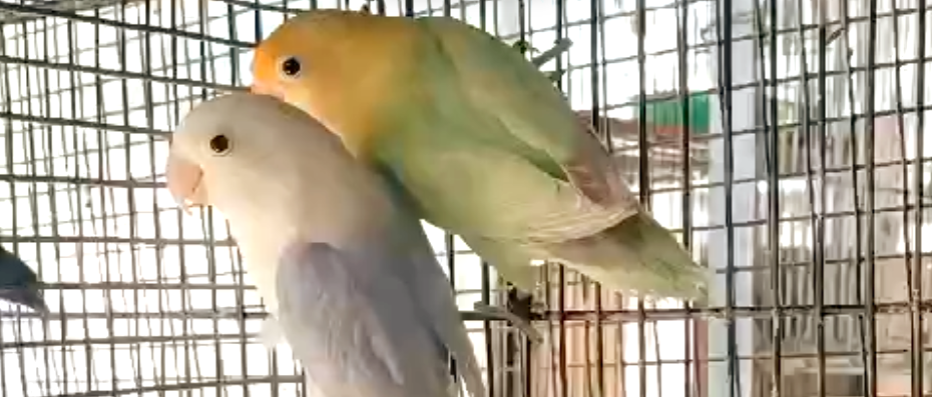Pairing a Violet Dilute Opaline Male Lovebird with a Parblue Dilute Female is an intriguing aspect of aviculture, especially for enthusiasts keen on exploring the genetic outcomes of such pairings. This article aims to provide comprehensive insights into the process, from understanding the genetic implications to the practical aspects of housing and caring for these birds. It’s an exciting journey for those looking to delve into lovebird breeding, aiming for specific color mutations, or simply appreciating these birds’ beauty and companionship.
Understanding Genetics
Before diving into the pairing process, it’s crucial to grasp the basics of lovebird genetics. Like many other birds, lovebirds exhibit a wide range of color mutations resulting from selective breeding. The Violet Dilute and Parblue (or Pastel Blue) mutations are among these variations.
- Violet Dilute Opaline Male: This bird carries genes for both the violet and dilute mutations and the opaline trait, which typically affects the pattern and distribution of colors on the feathers.
- Parblue Dilute Female: The Parblue mutation is a partial loss of the blue pigment, while the dilute mutation further reduces the intensity of the coloration, resulting in a bird with a soft, pastel-like appearance.
Genetic Implications of the Pairing
When pairing a Violet Dilute Opaline Male with a Parblue Dilute Female, the offspring can inherit various combinations of these mutations. The precise outcomes depend on whether the mutations are dominant, recessive, or sex-linked and whether the parents are heterozygous or homozygous for their mutations.
Preparing for Breeding
- Health Check: Ensure both birds are healthy, of breeding age, and have been vet-checked to rule out any potential health issues that could affect breeding success.
- Diet: Provide a balanced diet rich in nutrients essential for breeding, including seeds, pellets, fresh fruits, and vegetables, as well as supplements if a vet recommends.
- Environment: Set up a comfortable and safe breeding environment. This includes a spacious cage, nesting box, and materials for nest-building. Ensure the location is quiet and away from direct sunlight and drafts.
- Bonding: Although lovebirds usually form strong bonds with their mates, introductions should be done carefully. Monitor their interactions in a neutral space before housing them together permanently to ensure compatibility.
The Breeding Process
- Egg Laying: After successful mating, the female will lay eggs, typically ranging from 3 to 5 in a clutch.
- Incubation: The female incubates the eggs for about 21-24 days. During this period, ensure minimal stress and disturbance.
- Rearing: Both parents usually participate in feeding and caring for the chicks. Monitor the chicks’ development and ensure they gain weight and feathers properly.
Post-breeding Care
After the chicks have fledged, giving them and the parents adequate space is essential to prevent overcrowding and stress. Depending on the genetic outcomes and your breeding goals, you may decide to keep some offspring, sell them, or use them in future breeding projects.
Ethical Considerations
Breeding lovebirds should always be done ethically and responsibly, especially for specific mutations. Avoid inbreeding, ensure the well-being of the birds, and be prepared to care for any offspring, regardless of their color mutations.
Conclusion
Pairing a Violet Dilute Opaline Male Lovebird with a Parblue Dilute Female offers a fascinating glimpse into the world of avian genetics and color mutations. By understanding the genetic principles, preparing adequately, and caring for the birds ethically, breeders can enjoy the process and contribute to the diversity and beauty of the lovebird species. Always remember that the welfare of the birds should be the top priority, above any breeding goals for specific traits or colors.

